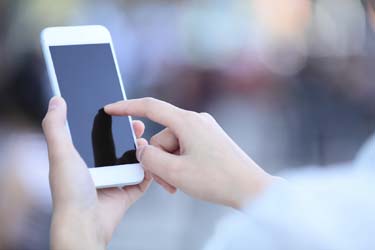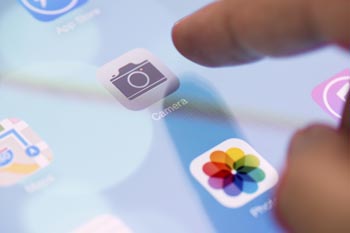
In photography, there are a number of issues that can cause what could have been a great shot to fall flat. Blur. Lens flare. Dark shadows. What went wrong? And how can you fix it the next time?
One of the biggest advantages of digital photography is that you can see your image right away. If there's a problem with your shot, you can retake it-that is, if you can identify what went wrong and if you know how to fix it.
Blur can be one of the most frustrating issues in photography-it can't be fixed with any editing program later, so if your shot is blurry, there's no way to correct it. But, if you can pinpoint why your photo is blurry, you can fix the issue and reshoot.
There are really two separate reasons that can leave your photos looking unsharp. One is focus, and we'll talk about that next. But the other issue is shutter speed. Remember, the shutter speed is how long your photo is being exposed to light. Anything that moves while the image is being taken will result in blur.
If one object in your photo is blurry (versus the entire photo), that one object likely moved while the photo was being taken. To eliminate that blur, you need to increase the shutter speed. That object may still move, but since the shutter isn't open as long, that movement doesn't cause blur. Use the ProCamera or VSCO app to choose a faster shutter speed. Remember, shutter speed is written in fractions-a 1/200 is much faster than a ½.
Sometimes, instead of using shutter speed to eliminate blur, you can prevent the movement in the first place. Shooting on a windy day, for example, will introduce blur into even your landscape images as the grass and leaves move in the wind. Simply shooting on a calmer day can prevent the blur, instead of using a faster shutter speed.
But what if your entire photo, and not just one object, is blurry? If your iPhone moves while the image is being taken, the whole image will blur from that motion. Even the slightest shake of your hand can introduce blur. Camera shake is much more pronounced at slower shutter speeds. If your entire image is blurry from camera shake, you can increase your shutter speed using a manual mode app to fix the blur.
If you just increase your shutter speed, you'll end up with a darker picture. To prevent going from blurry to underexposed, you'll need to increase the shutter speed and increase the ISO, which makes the camera more sensitive to light. Watch the screen (or the histogram) as you adjust your ISO to find a level that produces the proper exposure.
But, what if you can't increase your shutter speed any more and still get a good exposure? If you are shooting in limited light, that could be a good possibility. If you can't increase your shutter speed, you have to prevent the camera shake in the first place. The best way to prevent camera shake is to use a tripod, and then use the headphone volume buttons as a remote or use the self-timer feature. Even mounted on a tripod, touching the phone to shoot can add blur, so ideally you should use both a tripod and a remote or the self-timer.
Don't have a tripod on hand? That's not uncommon, since carrying around a tripod sort of negates the benefit of the iPhone's portability. There's no replacement for the steadiness of the tripod, but there are ways you can still work to reduce camera shake. Try holding the iPhone with both hands, and resting your elbows on a table or another sturdy object nearby. If there's nothing nearby to prop your elbows up on, you can get down on one knee and rest on elbow on your propped-up knee.

While motion blur is one reason your photos may not be sharp, the focus is another. Motion blur will often create a ghost-like appearance around the object. But if the object isn't in focus, you won't see that ghosting-the object will have the same shape and edges, but it just won't be sharp.
The autofocus on the iPhone does a good job of getting an object sharp-but doesn't do so well selecting the right object. Instead of leaving things up to chance, use the touch to focus feature. Simply tap on the object that you would like to be in focus and you'll see a yellow box appear showing where the focus is. If you are shooting a very busy photo, or taking a close-up, you may need to try a few times to get the focus perfect.
When you tap the screen to set the focus with one finger, the exposure is automatically adjusted to properly expose your focal point. If touching to focus made your image too dark or too light, touch the sun next to the yellow box and drag your finger up or down to adjust the exposure compensation.
Using the ProCamera app, you can set the focus and exposure separately. To do so, tap the screen once. You'll see a yellow circle, which indicates the exposure, and a blue box, which indicated the focus. Tap on one and drag to separate them. Once separated, you can drag them individually. Drag the blue box to what you want to be in focus, and drag the yellow circle for the portion of the scene that you want properly exposed.
Most of the time, you'll want your subject to both be in focus and properly exposed, but there could be a few occasions where that's not the case. If you want to take a silhouette photo, for example, you don't want your subject properly exposed, but you want them sharp. In that example, you would put the blue box on the subject, then place the yellow circle on the brightest portion of the image. You may also need to use exposure compensation to get a complete silhouette, as well as position the scene so that the light source is coming from behind the subject.

In both the native app and ProCamera app, you can lock the focus to ensure a sharper shot-sometimes, you may get an unsharp shot if you don't realize the focus is locked. If your focus is locked in ProCamera, you'll see a padlock symbol in the blue box. In the native app, you'll see a box that says AE/FE lock that pops up if you touch and hold the focal point. In the native app, you simply touch a different object on the screen to turn the lock off. To turn that feature off in ProCamera so that the camera refocuses if you or the subject moves, tap the settings icon in the lower right of the app and tap the F/E Lock icon until it's not green, then return to the shooting screen.
If, on the other hand, the iPhone keeps adjusting it's focus when you don't move (often a problem in close-ups), use the focus lock to avoid that issue. In the native app, that's touching and holding the focal point. In ProCamera, go back into the settings and turn the F/E Lock on.
When images are too light or too dark, it's usually an exposure issue.
But, sometimes the exposure is correct, but there are still portions of the image that are too light or too dark. The iPhone camera can only capture a certain range of light at the same time. If just one portion of the image is too light-for example, the sky in a landscape image-but the rest is well lit, the problem isn't an exposure issue, but a dynamic range one. Your camera can't capture the lightest portion of the scene and the darkest in the same shot.
The best way to fix this issue is to correct the light. If you are taking a portrait, for example and have this issue, try moving into full shade. Under full shade, you don't have the extreme light and darkness and can capture the entire range of light in a single image. If you are shooting a landscape, you can try taking the shot on a cloudy day instead, or near sunset.
The position of the light matters too, especially when shooting on a sunny day. A backlit subject will appear shadowy without a flash. Try moving your position (or the subjects) until the sun is at a side or front angle instead. The exception? Avoid front lighting in portraits, or your subject will squint.
Sometimes, flash can also correct the problem. If your subject appears shadowy, try turning the flash to "on." While most novices tend to use the flash only for dark scenes, the flash can help fill in those shadows. When you use a flash, you create less contrast between the light and dark areas and allow the camera to capture the entire scene without any extreme light or dark areas.

Ever have bright orbs appear on your photos? That's lens flare. Lens flare occurs when light hit the lens and scatters. In the photos, it appears like orbs and sometimes light streaks. Lens flares also tends to reduce the contrast in a photo.
Lens flare occurs from bright, direct light hitting the iPhone lens. To eliminate lens flare, you can adjust your camera's angle until you no longer see the flare. Flare often occurs when the sun is behind the subject, so shooting the subject from a different direction can fix the issue. Sometimes, flares can also be reduced by shading the camera with your hand to block the light. This may or may not be a solution depending on how the light is coming in-but it certainly doesn't hurt to try.
One of the iPhone's downfalls is that the resolution isn't very high. That can sometimes lead to images that look pixelated-but there's often a few causes.
Don't use the digital zoom. The zoom on the iPhone isn't a true zoom. It actually only crops the photo, which reduces the resolution. If you'd like the versatility of zoom on your iPhone, invest in an add-on telephoto lens that clips to your camera. The digital zoom will make your image look more pixelated.
Keep cropping to a minimum. When shooting with the iPhone, it's best to adjust your composition as you shoot, instead of cropping later on in an editing app. When you crop, you reduce the resolution of the photo, which can make it look pixelated.
Don't make big prints. Because of the iPhone's resolution, it's best not to print images larger than an 8x10. That's usually plenty big enough for hanging a shot on the wall. If you print larger, you will end up with a lower quality because the resolution simply isn't there.
Every camera can have it's problems-but if you know how to identify them, you can fix them and take better images even spontaneously. Before you leave your shoot, check your images for blur, focus issues, exposure problems, lens flare and pixelation.






















